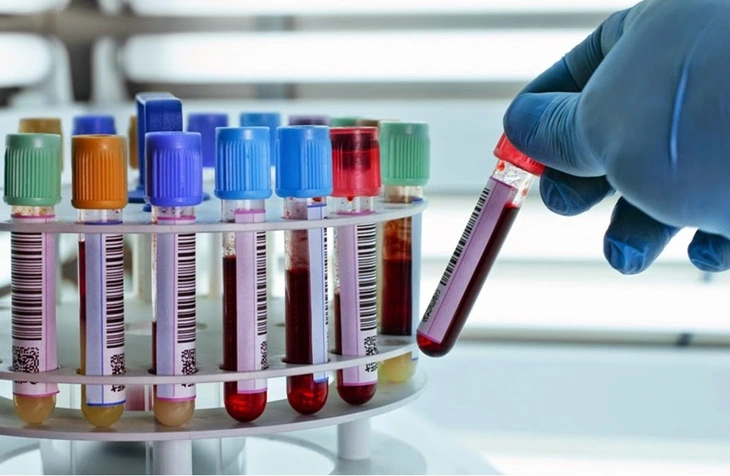
Doctors find the cause of high levels of suspected acute pancreatitis - Photo: BVCC
Elevated amylase but not acute pancreatitis
More than a month ago, a 7-year-old boy was diagnosed with measles and treated at a central hospital. During his hospitalization, he began to vomit and have abdominal pain. Test results showed an abnormally high level of amylase in the blood (amylase > 1,600 U/L, p-amylase > 600 U/L), although the abdominal ultrasound was completely normal.
Based on the increased amylase index, the hospital diagnosed acute pancreatitis and treated him according to the following regimen: diet, hydrolyzed milk protein, and drugs to reduce gastric acid secretion. Symptoms quickly subsided, the child was discharged from the hospital and continued taking medication at home.
However, two weeks later, a re-test showed that not only did the blood amylase not decrease, it also skyrocketed to more than 2,000 U/L, even though the child no longer had abdominal pain.
The baby was transferred to a local hospital and continued treatment for acute pancreatitis with complete fasting, intravenous nutrition, and antisecretory drugs.
But nearly three weeks later, the amylase index continued to increase. The family took the child to the Pediatric Center, Bach Mai Hospital for continued treatment.
Receiving the child patient, Dr. Mai Thanh Cong and his colleagues at the Pediatric Center were surprised with the initial results of the blood amylase index: 2719 U/L (27 times higher than normal). Blood lipase was completely normal (17 U/L). Abdominal CT scan showed that the pancreas was completely normal.
The child had no stomachache, no vomiting, and was active but had lost nearly 2kg due to prolonged fasting.
"With prolonged high amylase but normal lipase and pancreatic images, especially without clinical symptoms, we rule out acute pancreatitis," said Dr. Cong.
The question is: What causes blood amylase to increase so much if not pancreatitis?
The hidden culprit of the "giant enzyme"
According to doctors, amylase is an enzyme produced not only by the pancreas but also by the salivary glands. However, examination of the baby's salivary glands did not detect any abnormalities. Doctors turned to studying the mechanism of amylase metabolism.
Normally 25% of amylase is eliminated by the kidneys, 75% by the reticuloendothelial system. The baby's kidney function is completely normal, eliminating the possibility of kidney failure causing amylase accumulation.
Doctors hypothesize that amylase in the blood exists as a "super molecule" that combines with other proteins to form macroamylase, which cannot be filtered by the kidneys, leading to high blood amylase but low urine. This condition is called macroamylasemia, a benign, rare disease (about 1% of the population).
To test the hypothesis, doctors use the ACCR index (Amylase-Creatinine clearance ratio). Normally ACCR is about 3-5%. If <1%, it suggests macroamylasemia.
Laboratory tests showed blood amylase: 3687 U/L; urine amylase: 246 U/L; blood creatinine: 50 µmol/L; urine creatinine: 6.48 mmol/L - ACCR: 0.05% - an extremely low number, confirming the diagnosis of macroamylasemia.
"This number is like a correct solution to a difficult problem. I was overwhelmed with joy when I helped my child stop expensive and unnecessary treatments such as fasting or intravenous nutrition," Dr. Cong shared.
According to Dr. Cong, when blood amylase levels are high, especially in children, parents should not be too afraid to think of acute pancreatitis if the child does not have obvious symptoms. It is necessary to take the child to a specialized medical facility for a comprehensive assessment to avoid incorrect treatment. "Although macroamylasemia is rare, it is a diagnosis worth considering to 'clear the name' of the pancreas," he said.
Source: https://tuoitre.vn/be-trai-7-tuoi-nhin-an-gan-1-thang-vi-viem-tuy-cap-gia-bac-si-bat-ngo-tim-ra-nguyen-nhan-20250801085741124.htm


































































































Comment (0)